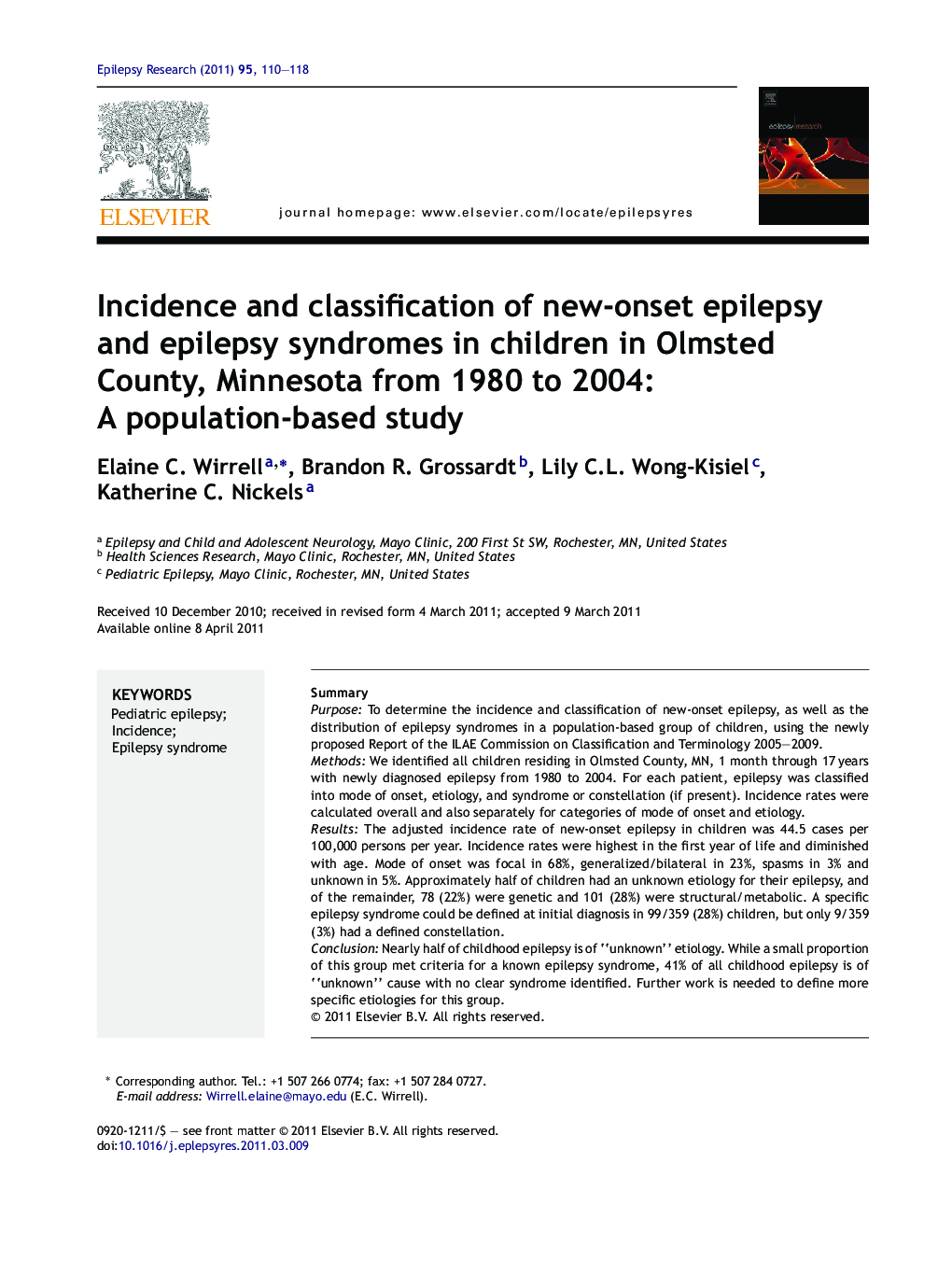| Article ID | Journal | Published Year | Pages | File Type |
|---|---|---|---|---|
| 3052367 | Epilepsy Research | 2011 | 9 Pages |
SummaryPurposeTo determine the incidence and classification of new-onset epilepsy, as well as the distribution of epilepsy syndromes in a population-based group of children, using the newly proposed Report of the ILAE Commission on Classification and Terminology 2005–2009.MethodsWe identified all children residing in Olmsted County, MN, 1 month through 17 years with newly diagnosed epilepsy from 1980 to 2004. For each patient, epilepsy was classified into mode of onset, etiology, and syndrome or constellation (if present). Incidence rates were calculated overall and also separately for categories of mode of onset and etiology.ResultsThe adjusted incidence rate of new-onset epilepsy in children was 44.5 cases per 100,000 persons per year. Incidence rates were highest in the first year of life and diminished with age. Mode of onset was focal in 68%, generalized/bilateral in 23%, spasms in 3% and unknown in 5%. Approximately half of children had an unknown etiology for their epilepsy, and of the remainder, 78 (22%) were genetic and 101 (28%) were structural/metabolic. A specific epilepsy syndrome could be defined at initial diagnosis in 99/359 (28%) children, but only 9/359 (3%) had a defined constellation.ConclusionNearly half of childhood epilepsy is of “unknown” etiology. While a small proportion of this group met criteria for a known epilepsy syndrome, 41% of all childhood epilepsy is of “unknown” cause with no clear syndrome identified. Further work is needed to define more specific etiologies for this group.
